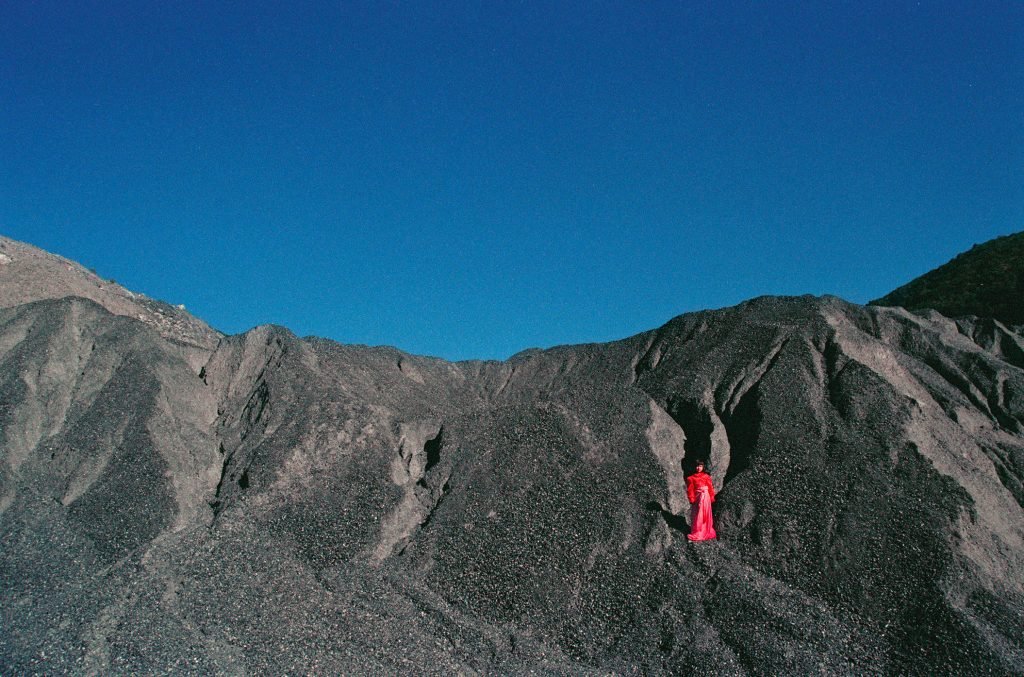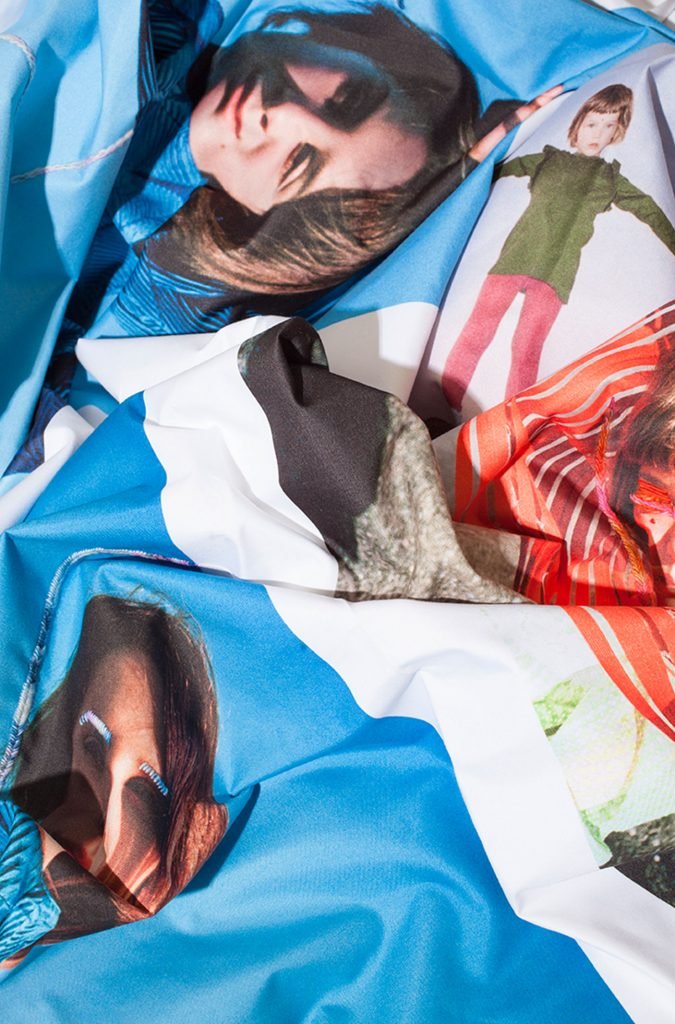Presenting a narrative and formal labyrinthine architecture, “Form is void void is color” is a book in which the classic and generally shared experience of the photographic book is questioned in favor of a research that finds in the elaborate engineering of paper the elements necessary to question the normative features of the “book” language. An articulation and complexity, the one published by this curious book, which reflects the imaginative capacity of the contents.
Chasing the three protagonists Uma, Dalma and Aiko, the observer is invited to cross different narrative spaces, a continuous change of scene highlighted both by the chromatic metamorphoses that dominate the images, and by the identity change assumed by elements such as water, fire, air, earth and space, elements that in the course of the book mutate in relation to the perspective change assumed by the characters.
The story, characterized by continuous twists and turns, reports through the progressive change of the three heroines an equally significant change of perspectives on the landscape, whose representation assists the different postures and actions by the protagonists.”Form is void void is color” is a project in which composition and rhythm are central, a work in which the stylistic sign is emphasized by the contrast between form and emptiness, the introduction of the bilingual text and its graphic presence in fact produce a sort of spatial pause which can be used to process the images and reorganize the chromatic perception.
If the narrative and the articulation of the contents and related stylistic changes refer an ideal complexity that is relevant for the understanding of the project, the same can be said of its genesis.
A story about history that saw the project begin with an adventurous three-day photo session in Pomaia Santa Luce, finding a natural evolution in Smolenskaya, a district of Moscow where the images turned into a book of objects; printed then in Milan, while in London, at the same time, the same artists reworked the images and created the installation of a giant book embroidered on fabric.
Made over three years from 2017 to 2020, “Form is void void is color” is a project that sees the lively collaboration between the photographic gaze of Gayarama, a creative project always been described by an open stylistic and imaginative opening, and Joe Valabrega’s curatorial research.
Gayarama.studio is an independent creative project dedicated to produce limited edition imaginaries, founded by two sisters, the photographer Chiara Dolma Andreuzza and the researcher Gaya Andreuzza. Believing in the collaboration as a form of art, Gayarama is characterized by the use of different kinds of formats and artistic solutions able to give the utmost importance to the image in itself. Working as a kind of family always different but close as a tribe, Gayarama has developed from 2012 projects and ideas through an infinite series of 35mm photos about interaction between people, horizons, geometric shapes, solid colors and landscape. All these elements has been narrated in photographic journeys in Marocco, Italy, Iceland, Burkina Faso, France, Uk, Nepal, India, Indonesia. By combining their eyes duo Gayarama aims to draw alternative paths in the field of imagination.
Joel Valabrega (1991) is an independent curator. She lives and works in Milan. She has a master’s degree in Architecture (Politecnico di Milano and IUAV of Venice). She has worked both for institutional contexts – such as the Hangar Bicocca, the Triennale of Milan and the V-A-C Foundation – and for independent spaces such as THEVIEW Studio. Together with Davide Giannella, Giovanna Silva and Delfino Sisto Legnani she is responsible for the programming of MEGA, a Milanese project space. Between 2018 and 2019 she worked as visiting curator at the V-A-C Foundation, a non-profit institution dedicated to contemporary art based in Moscow and Venice. She is currently part of the curatorial team for the public programme PARLA ASCOLTA GUARDA FAI at the Triennale of Milan. Her curatorial activity is carried out alongside research and collaboration with art magazines.














